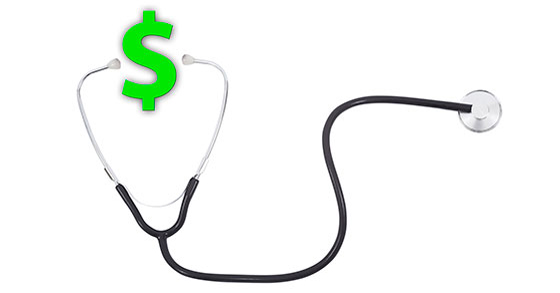To help defray health care costs, many people now contribute to, or are thinking about setting up, Health Savings Accounts (HSAs). With these accounts, individuals can pay for certain medical expenses on a tax advantaged basis.
The Basics
With HSAs, you take more responsibility for your health care costs. If you’re covered by a qualified high-deductible health plan, you can contribute pretax income to an employer-sponsored HSA — or make deductible contributions to an HSA you set up yourself.
You own the account, which can bear interest or be invested. It can grow tax-deferred, similar to an IRA. Withdrawals for qualified medical expenses are tax-free, and you can carry over a balance from year to year. So, unlike Flexible Spending Accounts (FSAs), undistributed balances in HSAs aren’t forfeited at year end.
For the 2019 tax year, you can make a tax-deductible HSA contribution of up to $3,500 if you have qualifying self-only coverage or up to $7,000 if you have qualifying family coverage (anything other than self-only coverage). If you’re age 55 or older as of December 31, the maximum contribution increases by $1,000.
To be eligible to contribute to an HSA, you must have a qualifying high deductible health insurance policy and no other general health coverage. For 2019, a high deductible health plan is defined as one with a deductible of at least $1,350 for self-only coverage or $2,700 for family coverage.
For 2019, qualifying policies must have had out-of-pocket maximums of no more than $6,750 for self-only coverage or $13,500 for family coverage.
Account balances
If you still have an HSA balance after reaching Medicare eligibility age (generally age 65), you can empty the account for any reason without a tax penalty. If you don’t use the withdrawal to cover qualified medical expenses, you’ll owe federal and state income tax. This is similar to having an additional retirement account available for use without having required minimum distributions requirements. Alternatively, you can continue to use your HSA balance to pay uninsured medical expenses incurred after reaching Medicare eligibility age and continue to have tax free withdrawals.
When an account holder under the age of 65 uses their health savings account’s funds for non-medical expenses, they have to pay income tax on the money withdrawn plus a 20- percent penalty. There’s no tax penalty on withdrawals made after disability or death.
If your HSA still has a balance upon death, your surviving spouse, if named as beneficiary, can take over the account tax-free and treat it as his or her own HSA. In other cases, the date-of-death HSA balance must generally be included in taxable income on that date by the person who inherits the account, though the taxable amount can be reduced by any qualified medical expenses incurred by the deceased that are then paid by the beneficiary within a year of the death.
Deadlines and deductions
If you’re eligible to make an HSA contribution, the deadline is April 15 of the following year (adjusted for weekends and holidays) to open an account and make a tax-deductible contribution for the previous year.
So, if you’re eligible, there’s plenty of time to make a deductible contribution for 2019. The deadline for making 2019 contributions is April 15, 2020.
The tax benefit for HSA contributions is an “above-the-line” deduction. That means you can lower your taxable income even if you don’t itemize.
In addition, the HSA deduction has no income limitations. Everyone can make deductible HSA contributions as long as they meet the qualifying high deductible health insurance coverage and deadline requirements.
Tax-smart opportunity
HSAs can provide a smart tax-saving opportunity for individuals with qualifying high deductible health plans. Contact us to help you set up an HSA or decide how much to contribute for 2019.
Contact your DDK tax advisor for any further questions or consulting!


